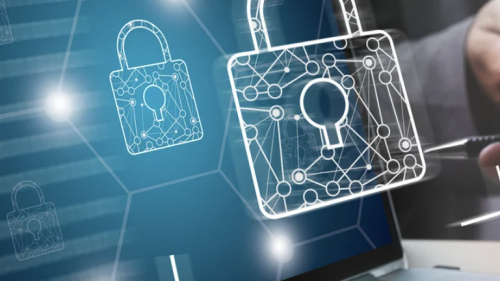Public sector government agencies are present in every city and town around the world, with employees undertaking a wide variety of projects aimed at improving their local community. These involve things like health and safety, transport infrastructure, parks and recreation, sewage and water, schools, hospitals and municipal buildings. As a public service, these agencies rely on government funding and, in many cases, don’t have access to the same high budgets that private sector companies have.
For this reason, it’s imperative that the public sector best utilizes its budget in a manner that can still provide top-quality service to the community. In recent years, modern public sector IT solutions have proven especially helpful in keeping costs to a minimum without sacrificing the quality of service provided. Below we’ll explore five examples of how innovative new IT solutions have helped improve public sector services.
Artificial Intelligence (AI)
Artificial Intelligence (AI) may still sound like a futuristic term to some, but the truth is, most of us already use it in our everyday lives. Auto-correct, predictive text, chatbots, virtual assistants and translation tools are all examples of AI in daily life.
The most prominent way in which AI is transforming the public sector is via chatbots - the helpful pop-up windows found on many government websites. These clever little programs provide advice to citizens on a range of topics and utilize machine learning technology to consistently improve their results.1
In addition to chatbots, AI can use its analytical and predictive skills to assist governments in making quicker and more accurate decisions. This is helpful in areas like credit scoring, tax evasion and disease tracking. Speaking on a Social Media, Mobility, Analytics and Cloud (S.M.A.C) podcast, Dante Ricci of business software firm SAP said that artificial intelligence (AI) could “automate everything from the constituent service experience to accurately detecting fraud, waste and abuse better.” 2
Document Digitization
Doing away with paper documents and moving to an entirely digital format for record management and communications is a crucial goal for the public sector. Not only is this a critical step towards improving its environmental credentials but will provide a wealth of additional benefits, including cost savings, easy access, extra security, automated backups and better crisis management.
Technology is now being used in the public sector to rapidly scan and digitize decades’ worth of government documents, making them immediately available to the wider public for the first time. Text recognition software converts scanned documents into digital files with standard computer text words and letters ready to copy, edit and make available online in a searchable format.3
Improved Communications
Digitizing the way in which it communicates with both staff and citizens has proven extremely successful for the public sector. In one example, the City of Sacramento used a digital e-newsletter platform to increase its volunteer participation by 7%, saving the agency $9 million.4
Some cities in the United Kingdom have also used digital communications to improve services to clients. In the city of Wrexham, a government website collates citizens information from its website and automatically signs them up for garbage day reminder emails, helping to ensure services run smoothly.5
Automation
Digital automation has proven to be one of the most effective cost-reduction tools of the past decade, helping to free up staff resources, boost productivity and minimize instances of human error. Not only does automation reduce staffing costs but also helps the council to free up surplus real estate that would otherwise be occupied by redundant desk workers.
Many believe automation threatens job losses, but in most cases, workers can easily be reassigned to jobs where their true skills are better utilized. This also helps to motivate staff, giving them a greater purpose in more engaging and less repetitive positions.6
Organizational Efficiency
In a 2019 KPMG survey on Digital Transformation in the Public Sector, employees expressed an overwhelming opinion that modern IT solutions helped to improve internal organizational efficiency. Interestingly, they also noted that organizations could be better at helping teams to collaborate and cross-function more effectively—an area of digitization that is now seeing a higher degree of focus in post-pandemic 2021.7
An even earlier 2016 survey by governing.com reported that over half of all government employees struggle to complete their workload within standard hours, with 21% never completing all their tasks.8
Nowadays, we are starting to see improvement in this area due to digital organizational and project management platforms that track tasks, facilitate collaboration and improve communications. With all their tasks, calendar entries and relevant contacts all in one place, employees are able to complete tasks far more efficiently and within deadlines.9
Interested in Public Sector Administration?
The digitization of services is now an increasingly common theme found in both the public and private sectors and isn’t going anywhere soon. In the future, we are likely to see an even greater demand for IT professionals in the public sector, with functions like onboarding, background checks and identity verification taking an increasingly automated role.
If you feel you can offer new insight and skills to help drive change and innovation in the public sector, consider an online Master of Public Administration from Kent State University. The convenient home study course covers all aspects of IT integration and administration in the public sector, completed in your own time with no need to sacrifice current job or family commitments.
- Retrieved on March 25, 2021, from govtech.com/civic/GT-September-Automation-Beyond-the-Physical-AI-in-the-Public-Sector.html
- Retrieved on March 25, 2021, from digitalistmag.com/improving-lives/2018/05/16/technology-in-public-sector-possibilities-challenges-06166679/
- Retrieved on March 25, 2021, from govtech.com/opinion/Digital-Government-More-Critical-Than-Ever-Contributed.html
- Retrieved on March 25, 2021, from granicus.com/blog/effective-communications-helped-sacramento-get-9-million-donated-services/
- Retrieved on March 25, 2021, from wrexham.gov.uk/service/when-are-my-bins-collected
- Retrieved on March 25, 2021, from mckinsey.com/business-functions/organization/our-insights/the-organization-blog/employee-motivation-in-the-age-of-automation-and-agility
- Retrieved on March 25, 2021, from institutes.kpmg.us/content/dam/institutes/en/government/pdfs/2019/Digital-Transformation-Public-Sector-Survey.pdf
- Retrieved on March 25, 2021, from governing.com/archive/gov-time-usage-survey-government.html
- Retrieved on March 25, 2021, from forbes.com/sites/smartsheet/2019/03/29/how-digital-transformation-is-revolutionizing-government/?sh=6e44fd8fd3a4




